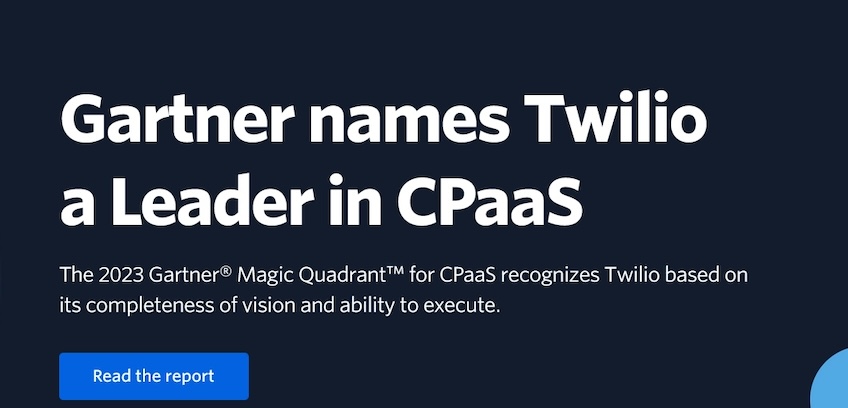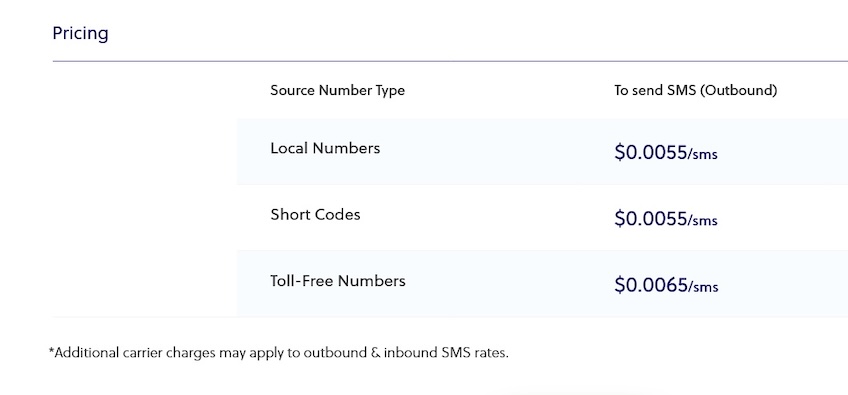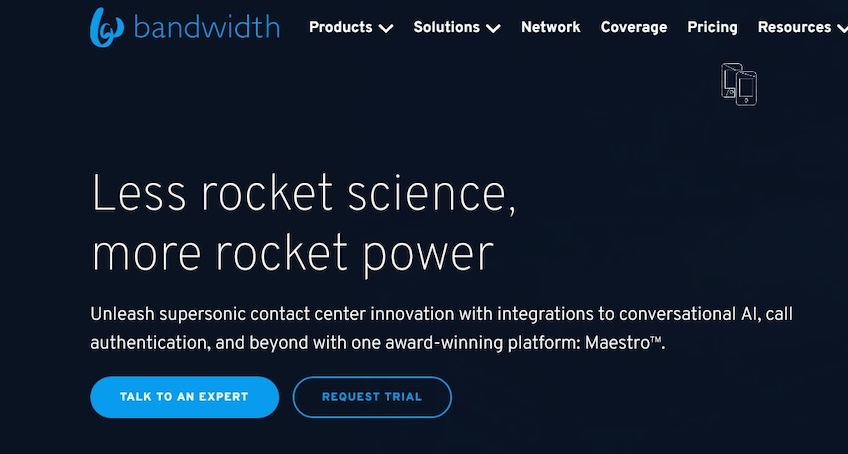CPaaS, short for Communication Platform as a Service (CPaaS), is a cloud-based platform that enables developers to integrate real-time communication features into their own applications without having to build backend infrastructure from scratch.
More simply put? CPaaS lets you embed calling, texting, video, and other communication functions directly into your software or application.
The main advantage of CPaaS is that it lets you integrate real-time communication capabilities without having to construct them yourself from the ground up. All you need is a cloud-based provider.
How CPaaS is Different from Other Phone Platforms
There’s a ton of different phone and communication platforms out there. So what exactly makes CPaaS unique?
Let’s take a look at the major platforms and compare them to CPaaS:
1. VoIP Systems (Voice over Internet Protocol):
At its core, VoIP works by taking voice calls and transforming them into digital data packets, which travel across the internet. This is fundamentally different from traditional telephone technology, which relies on dedicated physical lines to transmit voice signals.
Here are the key differences between VoIP and CPaaS:
Nature of Service
VoIP and CPaaS both leverage the power of the internet for call transmission. The big difference is in their focus.
VoIP primarily zeroes in on voice communication, though some modern systems are also now starting to include additional features like video conferencing. CPaaS, on the other hand, typically offers a more versatile suite of communication tools, including everything from video to traditional voice messaging.
Integration Possibilities
VoIP, in its traditional form, is also a standalone system. It’s designed predominantly for voice calls, with some modern systems offering supplementary features like texting or video.
CPaaS goes one step further. It’s not just about facilitating communication, but also seamlessly integrating these features into other applications. Imagine embedding chat, voice, video, and even AI-driven interactions directly into your app or website. With all of these options, CPaaS simply unlocks more possibilities.
Scalability & Customization
Generally speaking, VoIP systems tend to offer a fixed set of features, while CPaaS platforms tend to be more modular and adaptable. This is partly due to the wider range of integration possibilities.
The end result is that with CPaaS, businesses can pick and choose functionalities based on their specific needs, leading to a more customized user experience.
Infrastructure & Device Limits
Finally, traditional VoIP systems typically require specific hardware or software (think IP Phones or softphones) for optimal functioning. This is changing, though, as more services can now be used across different types of devices.
Since CPaaS is cloud-based, it’s less reliant on specific devices. This can make for a more fluid communication experience across various platforms and devices.
Bottom line? CPaaS is overall a more flexible and comprehensive solution if you’re looking to embed communication tools directly into your app or digital platform.
2. UCaaS (Unified Communications as a Service)
UCaaS, or Unified Communications as a Service, is another popular solution used to streamline communications. It’s also a cloud platform.
As the name implies, UCaaS aims to “unify” multiple communication tools into a single solution. Ideally, it’s a singular hub where voice calls, video conferences, text chats, and collaboration tools come together seamlessly.
This streamlined approach can help eliminate the friction that comes with juggling multiple standalone tools.
Here are the main differences between UCaaS and CPaaS:
Service vs. Building Blocks
At its core, UCaaS presents businesses with a ready-made suite of communication tools, with out-of-the-box functionalities. It’s a bit more of a done-for-you service.
CPaaS, in contrast, is more akin to a set of lego blocks. It grants developers the leeway to craft and tailor communication features. If you have a really specific vision or requirements for your app, this added flexibility can be valuable.
Customer Customization
While UCaaS delivers a broad spectrum of unified tools, its features are often standardized. What if you really want or need to customize things for your customers? That’s where CPaaS can shine.
CPaaS can empower developers to mold your app’s user experience to suit your customers’ specific needs.
Target Audience
UCaaS is typically geared towards businesses seeking an immediate solution. Using it, you can often avoid diving off the deep end into the seemingly endless development rabbit hole (to mix metaphors). So if you’re a smaller organization looking for a quick fix, this could be right up your alley.
CPaaS, on the other hand, is meant for businesses and developers who want to go the extra mile to weave communication tools intrinsically into their applications. This typically can require a lot more technical and developmental know-how, but the trade-off can be worth it for extra customization.
In short, both UCaaS and CPaaS aim to refine and enhance communication. They just take a different approach:
- UCaaS offers an integrated suite of tools ready for deployment, and streamlines them all under one umbrella.
- CPaaS presents a canvas for developers to paint their unique communication landscape with much more customization.
Common Features CPaaS Enables for Your App
So what are some unique features CPaaS can embed into your app?
Here’s a more detailed breakdown of some of the common features you get with CPaaS:
- In-App Calling: Ever notice how you can call or “hail” your Uber driver directly from within the app? CPaaS enables this. It ensures users stay within the app interface and even lets them make calls without revealing personal phone numbers.
- Text Messaging: With CPaaS, apps can seamlessly offer SMS or in-app chat tools. This fosters instant communication between users and also makes for a more interactive experience.
- Video Conferencing: No need for external video call setups. Through CPaaS, users can start video calls or hop into video conferences right from the app, keeping meetings and collaborations smooth and hassle-free.
- Push Notifications: CPaaS lets you send timely alerts about updates, incoming messages, and other important info in the form of push notifications. This way you can communicate even when users aren’t actively engaged.
- Secure File Sharing: Lastly, CPaaS equips apps with robust file-sharing options. Your users can easily and securely exchange documents within the system.
Functionality to Expect With CPaaS
The most impressive feature about CPaaS is its multichannel capabilities.
By embedding voice, video, chat, and/or SMS functionalities into your application, CPaaS solutions give users multiple avenues for interaction.
Beyond just interaction avenues, another ingredient of CPaaS’s appeal is its expansive reach. Rather than being bound by regional constraints, CPaaS platforms shine in their ability to offer international coverage. This means users will be able to use and work within the system regardless of location.
There’s also more to CPaaS than just bridging communication gaps.
As companies grow and evolve, so do their communication needs. CPaaS platforms are designed to scale, which means that as your business grows, your communications platform can grow with you.
Lastly, CPaaS provides really great analytics and insights. You can track call durations, which provide you with insight into peak interaction times. You’re also able to analyze message exchange patterns and get more insights to optimize the user experience even further.
Popular CPaaS Options
You’ve got the full scoop on what makes CPaaS so great. But what’s the best CPaaS solution for your organization?
Here are a few of the top options:
Twilio
Twilio has carved a niche for itself in the CPaaS arena with its impressive API library. Developers worldwide have gravitated towards the company because of the vast range of communication functionalities it offers, from simple messaging services to complex video conferencing.

Twilio’s flexibility and scalability is also noteworthy. Whether you’re a startup trying to establish a foothold or an enterprise-level corporation catering to millions, Twilio’s infrastructure is adept at handling the load and ensuring a consistent experience.
Plivo
Cost can be a CPaaS deterrent for many businesses, especially those that are just starting out. Known for its competitive pricing, Plivo offers top-notch communication features at competitive fees:

Their APIs are also straightforward, reducing the learning curve and allowing developers to integrate communication features with minimal fuss.
Bandwidth
Most CPaaS providers offer a suite of communication tools, but Bandwidth takes it a notch higher with its unique raw telephony data feature. This lets you dive deep, gaining granular insights into communication patterns, something that’s often missed with standard analytical tools.
With Bandwidth’s detailed insights, you can identify call quality and message deliverability issues and troubleshoot problems that arise, allowing you to see what’s going wrong and fix the problems before they become a bigger issue.
Ultimately, by fixing issues before your users even recognize there is a problem, you create a better customer experience.

This level of in-depth analytics data can be a game-changer, allowing you to refine strategies, optimize costs, and more.
